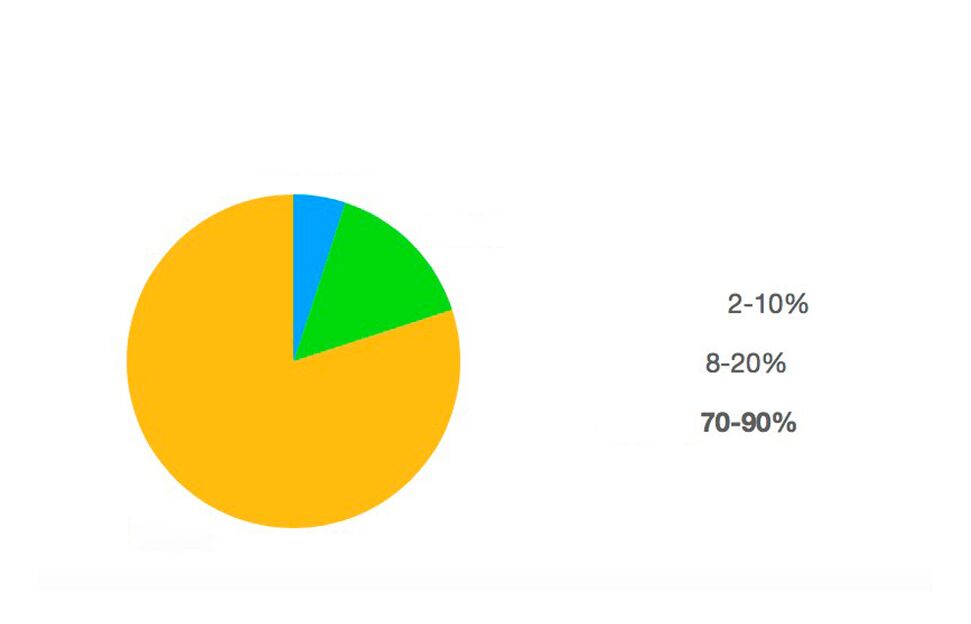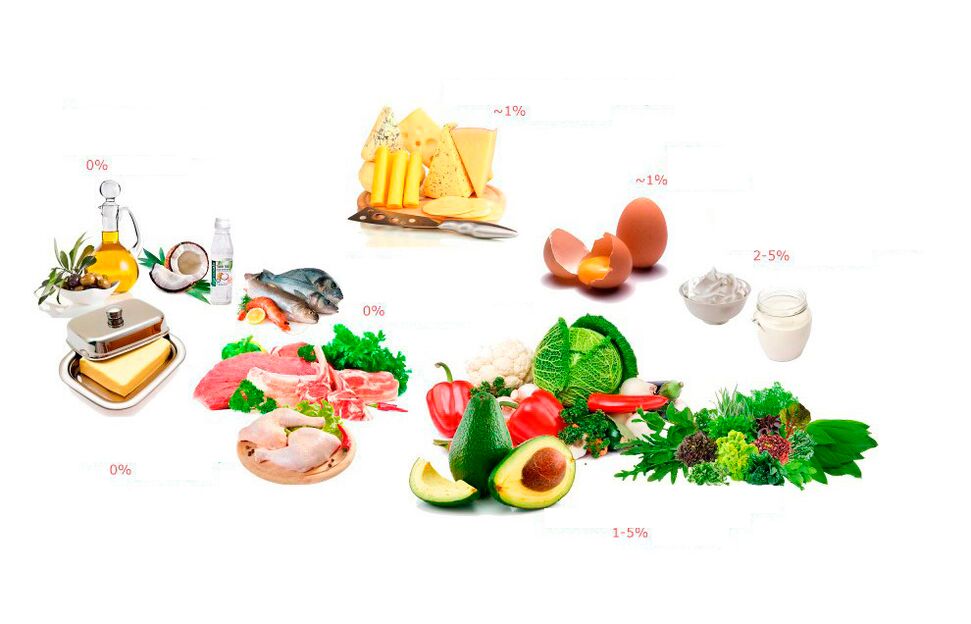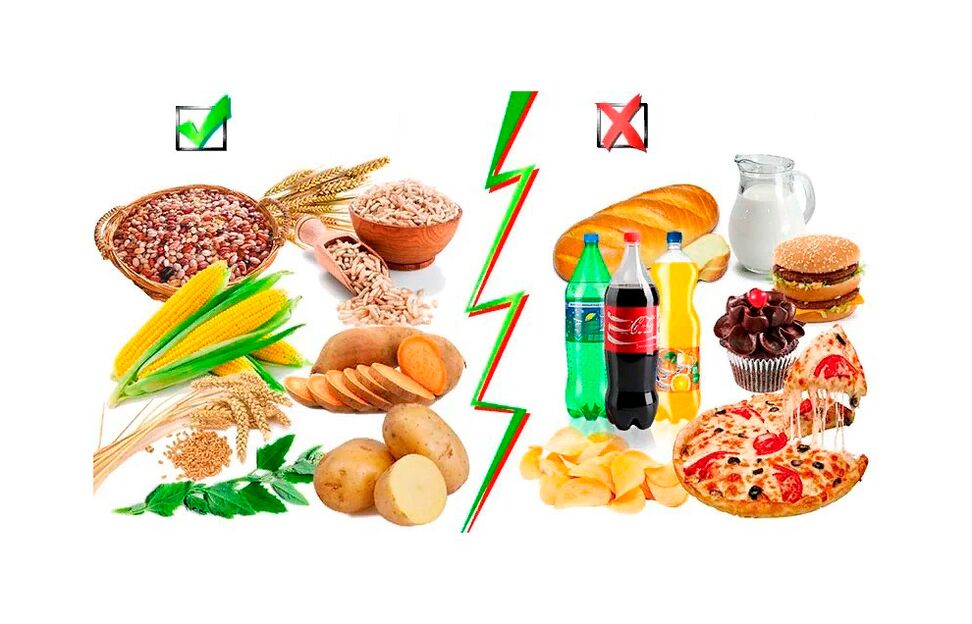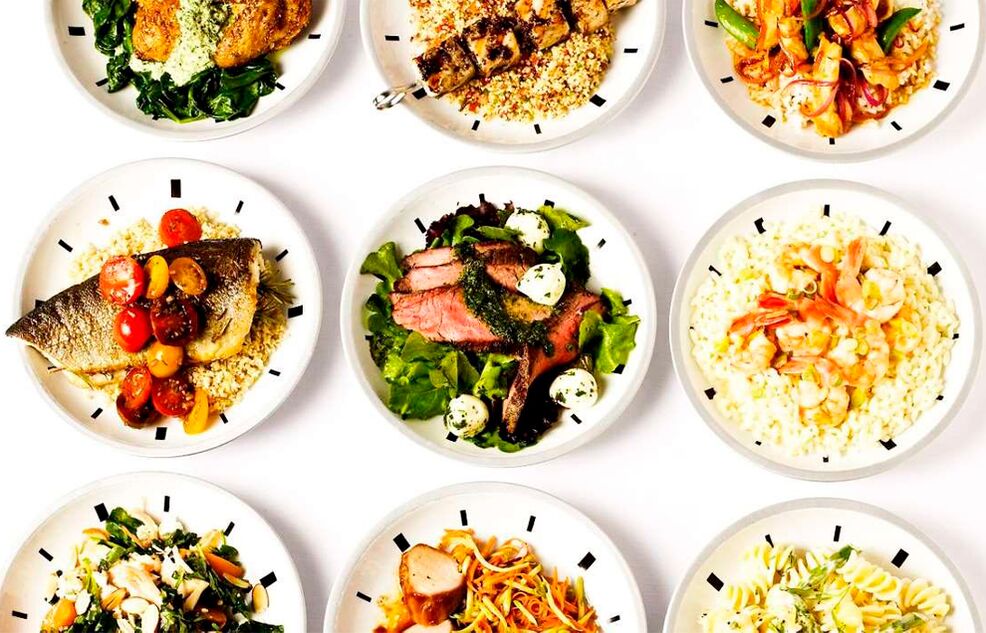A carbohydrate-free diet is an extremely low-carb version of a diet in which the diet is focused on protein, healthy fats and fiber.
To provide energy to the body and brain, our body usually uses carbohydrates (glucose). Reducing them leads to a decrease in the body's production of insulin, as a result of which it begins to break down proteins (muscle stores) and stored fat as an alternative source. This leads to rapid weight loss.
Depending on age, weight, physical activity and goals (weight loss, muscle gain, body drying), the body requires different amounts of protein, fat and carbohydrates (BJU). According to experts, the average daily consumption is as follows:
- 45-65% carbohydrates
- 20-35% fat
- 10-35% protein
With a low carb diet, fat becomes the main source of calories and carbs are reduced to 2-10%.

The general principles of a carbohydrate-free diet are as follows:
- The amount of carbohydrates consumed is reduced from 0 to 30 grams per day.
- Be sure to drink at least 8-12 glasses of water a day to remove toxins from the body.
- Since most diets are made up of proteins and fats, you need to focus on their benefits. It is important to stop consuming trans fats, not to over-consume saturated ones. For example, a 2018 study found that a low-carbohydrate diet that favors plant-based proteins and fats over animal sources is associated with lower mortality. Think not only about waist reduction, but also about your long-term health.
- It is almost impossible to avoid carbohydrates completely, as they are found in many foods. But first, those with a glycemic index above 50 should be avoided.
Today, the most popular type of low carb diet is the keto diet, which has a BJU ratio of 75% fat, 20% protein and 5% carbohydrates. Also one of the most famous and popular is the Ducan diet, a diet based on protein.
Advantages and disadvantages of a carbohydrate diet
Any diet is limited and stressful, so before experimenting with diet, it is important to evaluate all the pros and cons of the future regimen.
The Benefits of a Carbohydrate-Free Diet
- Replacing carbohydrates with protein affects the hunger hormone ghrelin, which makes you feel full and can reduce snacks and daily calorie intake.
- Weight loss in the first few weeks will be fast. This is mainly due to a decrease in fluid intake. Foods rich in carbohydrates not only contain a lot of water, but also excrete it through metabolism. Therefore, a carbohydrate-free diet is often chosen by those who are trying to lose weight fast. A study of 79 obese adults found that those who restricted their carbohydrate intake to less than 30 grams a day lost about 4 kg more over 6 months than those who limited their fat intake instead.
- Intake of carbohydrates has a significant effect on blood sugar and insulin levels. Excess glucose is linked to many health problems, such as type 2 diabetes, cancer and cardiovascular disease. Low carb diets reduce the likelihood of these effects.
- According to studies, a carbohydrate-free diet can reduce the symptoms of Alzheimer's disease and slow its progression.
Disadvantages of a carbohydrate-free diet
- Reducing the amount of carbohydrates consumed reduces insulin levels and increases the hormone glucagon, which causes the body to burn fat. However, when the body switches to this type of fat burning, a process called ketosis takes place and compounds called ketones accumulate in the body. This process can cause side effects, including nausea, headaches, halitosis, fever, sleep disturbances, and so on. In addition, fatigue and drowsiness are common. For this reason, there are problems in everyday life, including a significant reduction in the number of trainings and a deterioration in the quality of their implementation.
- A diet low in carbohydrates inevitably leads to a lack of fiber. Many studies show that the action of beneficial bacteria in our intestines when we consume dietary fiber is essential for overall health. Bacteria work with fiber to form short-chain fatty acids that prevent the growth of harmful bacteria, maintain intestinal health and have anti-inflammatory and antimicrobial effects. In addition, such a diet is difficult to provide the body with sufficient amounts of vitamins, especially groups B and C, and minerals such as potassium.
- Prolonged dieting may increase the risk of high cholesterol, osteoporosis, heart rhythm problems and kidney problems.
- The most common side effects of a carbohydrate-free diet are constipation or indigestion.
Who is not suitable for a low carb diet?
- Those with diabetes or chronic illness who need careful control of their blood sugar.
- People with problems with the cardiovascular system, blood pressure and gastrointestinal tract.
- Pregnant and lactating women.
- Elderly, adolescents and people with a low body mass index.
- People with food-related emotional or psychological problems, including eating disorders.
Before trying a carbohydrate-free diet, contact a professional to make sure it does not harm you.
General guidelines for a carbohydrate-free diet
Low carb foods mainly include oils: coconut, butter or ghee, olive (crude), avocado oil, etc.
Although all oils and fats contain 0 or a minimum amount of carbohydrates, not all are healthy. Some oils are treated and contain chemicals. In addition, most vegetable oils are high in omega-6 fatty acids, which can cause inflammation if overused. These fats can also inhibit the anti-inflammatory action of other fats, such as omega-3.
For this reason, it is best to avoid oils that are high in omega-6 fatty acids, such as soy, corn, canola and peanut butter.

As the diet will mainly consist of meat, which is mainly made up of protein and fat, make sure that it is of good quality and ideally organic, without additives, as their main purpose is to improve the taste and extend the shelf life of the product. Try not to buy processed meat products. Many manufacturers add sugar, spices and flavors to increase the amount of carbohydrates.
Although dairy products contain carbohydrates (sugars in the form of lactose), they are mostly insignificant. Sour milk can be used to produce protein, calcium, vitamin D and potassium. Milk and yogurt are the most carbohydrates, but if you are not ready to cut them out completely, choose products without added sweeteners or flavors, and it is important to monitor the number of servings.
Particular attention must be paid to food processing. To follow a diet, use recipes that include cooking, stewing, steaming. Baking is useful. And it is better to give up fried food altogether.
You should also choose foods with a low glycemic index (up to 50). They are loaded with slow carbohydrates, which take a long time to decompose and create a feeling of fullness. In general, it is worth remembering that they are not fat from carbohydrates, but from an excessive calorie diet and sedentary lifestyle.

What foods to eat and avoid a carbohydrate-free diet?
Healthy foods low in carbohydrates
- Meat and animal products of low carbohydrate content: chicken, beef, turkey, lamb, pork, eggs, butter, cheese
- Seafood: salmon, catfish, cod, shrimp, sardine, herring, anchovies, trout
- Spices: herbs and spices
- Low calorie drinks: water, black coffee and tea
- Nuts and seeds (low carb): almonds, walnuts, pumpkin seeds, sunflower seeds, pistachios, cashew nuts
- Vegetables and fruits, free of starch, rich in fat: broccoli, zucchini, paprika, eggplant, cucumbers, cauliflower, leafy greens, Brussels sprouts, celery, asparagus, mushrooms, coconuts, avocados
Foods to avoid
A carbohydrate-free diet significantly limits and excludes several food groups, including:
- Cereals and grains: rice, barley, quinoa, wheat, bread, pasta
- Sweets and confectionery: cakes, cookies, candies
- Carbonated and sweet drinks
- Fruits and berries: apples, oranges, bananas, kiwis, pears
- Starchy vegetables: peas, corn, zucchini, potatoes
- Legumes: beans, chickpeas, lentils, peas
- Dairy products: milk and yogurt
- Spices with added sugar: ketchup, barbecue sauce, salad dressings
- Alcohol: beer, wine, drink, sweet cocktails, port, vermouth
Carbohydrate-free menu per week
Although the list of available foods has been significantly reduced, the diet can be varied. An example of a daily diet without carbohydrates.
Monday
Breakfast: omelette with mushrooms
Lunch: beef broth
Dinner: oven-baked turkey fillet with asparagus
Tuesday
Breakfast: flax seed bread, guacamole and stewed egg
Lunch: miso soup
Dinner: oven-baked zucchini with cheese
Wednesday
Breakfast: salad with salmon and avocado
Lunch: broth with chicken cutlets
Dinner: pasta with bacon and cream sauce
Thursday
Breakfast: salad with chicken, cucumbers, feta and spinach
Lunch: zucchini noodles with steamed chicken cutlet
Dinner: pepper stuffed with seafood
On Friday
Breakfast: curd casserole
Lunch: mushroom soup
Dinner: steak and green vegetables
On Saturday
Breakfast: egg with bacon
Lunch: brown rice with trout
Dinner: stewed cabbage with meat
Sunday
Breakfast: oatmeal with a little almonds and boiled eggs
Lunch: boiled chicken with green peas
Dinner: seafood and green vegetable salad

Remember that a complete and long-term ban on carbohydrate intake is extreme, and extreme eating habits do no good. A proper diet should be balanced and contain all the vitamins and nutrients necessary for the body to function effectively. Experts have differing views on a low-carbohydrate and low-carbohydrate diet, but all agree that such a diet should be short-lived and followed for no more than 2 months in a row.














































































